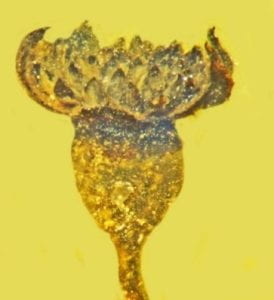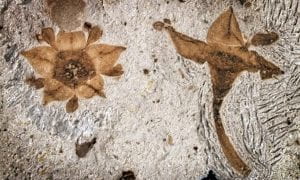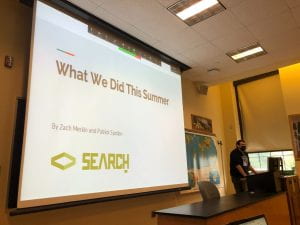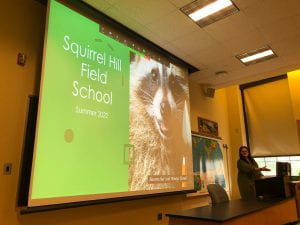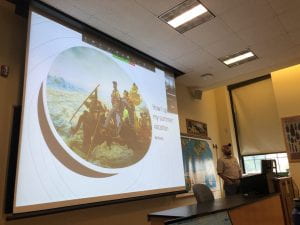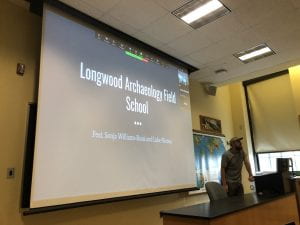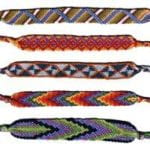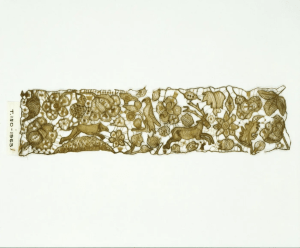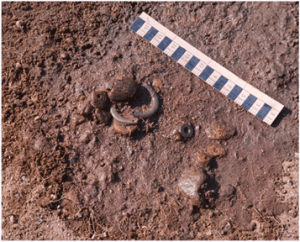The first day of Fall for 2022 was officially on September 22nd. As the season change, flowers of summer will begin to fade. Flowers die out every season, every year, and some species are known to have even gone extinct. Flowers are fragile and rarely preserved in the archaeological record. However, biologists, archaeologists, and other researchers have been able to recover evidence of flowers, such as fossilized flowers, in the archaeological record. Researchers can also gather information from studying the iconography on ceramics and jewelry, in paintings, texts, sculptures, and other forms of artistic expression, to learn more about the flowers that were popular in the past.
Flowers permeate many aspects of the ancient world. Ancient Egyptians worshiped, Nefertum, the god of perfumes who was also the god of the lotus blossom. In the Egyptian creation story, Ra, the sun god, emerged from a blue lotus. Statuettes and amulets often portrayed Nefertum with a lotus on his head or as a lotus flower with two feathers. During the Tang dynasty in ancient China, around 8-12th centuries CE, tree peonies were seen as symbols of feminine beauty, love, wealth, and status. They became common and popular in paintings during the Song dynasty. Even one of the famous Nazaca Lines, 2,000-year-old giant geoglyphs etched into the ground in Lima, Peru, includes a shape that resembles a flower.

Ancient Bouquet Found in Teotihuacán
In 2021 bouquets of flowers were discovered in the ancient city of Teotihuacán in Mexico by archaeologists from the National Institute of Anthropology and History of Mexico. The four bouquets date to 1,800 years ago and were found in a tunnel under a pyramid, 18 meters down. They were well-preserved and likely a gift for the deity Quetzalcoatl.

Plant Impressions In Israel
Archaeologists in Israel from the University of Haifa have also found plant impressions, including flowers, in graves. The plants appear to have been buried underneath the dead and date to around 12,000 years ago. This is one of the earliest uses of flowers in ceremonial burials.
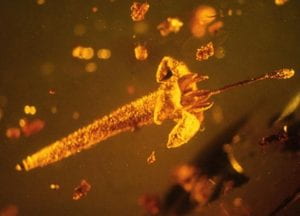
Strychnos electri
In terms of preserving ancient flowers, amber is a fantastic means as it is essentially fossilized resin. In 1986 a cave in the Dominican Republic was discovered. It was home to hundreds of fossilized plants and insects. However, it wasn’t until 2016 when a preserved fossil flower was announced. The flowers were a new species, Strychnos electri, and are around 45-15 million years old. They were part of the asterid plant clade, which are one of the largest lineages of flowering plants, and are antecedents to over 80,000 species, such as potatoes, coffee, and even the poisonous strychnine tree.
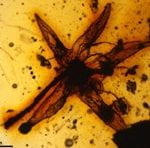
Lijinganthus revoluta
A flower dating to the mid-Creataceous, Lijinganthus revoluta, was discovered by a team from Nanjing Institute of Geology and Paleontology of the Chinese Academy of Sciences in 2018, in Myanmar amber. A new genus and species of fossil angiosperm was also found by paleontologists in 2020 from Oregon State University and the Agricultural Research Service of the U.S. Department of Agriculture in Myanmar in their mid-Cretaceous amber deposits. This fossil flower is almost 100 million years old and is named Valviloculus pleristaminis.
In the Salamonca Shale Formation in Chubut Province, Patagonia, Argentina, fossilized flowers dating to around 66 million years ago, the early Paleocene epoch, were found in 2017. The compressions and impressions on flat-laminated gray shale are part of the Rhamnaceae, buckthorn, family, and are called Notiantha grandensis.
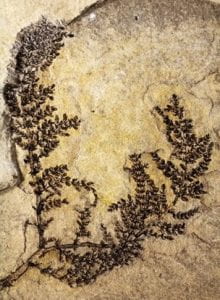
Montsechia vidalii
Fossilized remains of an aquatic plant from the beginning of the Cretaceous period were discovered in Spain in 2015. Montsechia vidalii dates to around 130 million years ago and looks similar to the modern-day coontail. Prior to this discovery, Archaefructus sinensis, a 125-million-year-old fossil from Liaoning Province in China, was thought to be the world’s oldest flower.
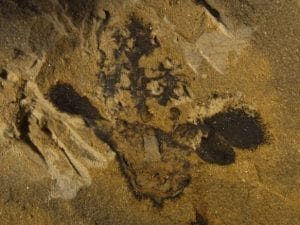
Nanjinganthus dendrostyla
However, in 2018, scientists at the Nanjing Institute of Geology and Paleontology found fossilized flowers that date to 175 million years ago, the early Jurassic in the South Xiangshan Formation in China’s Nanjing Region. There were over 200 specimens of the fossilized flowers, named Nanjinganthus dendrostyla, which allowed the researchers to combine information and reconstruct a single flower, now recognized as the oldest evidence of a flower plant, an angiosperm.

Florigerminis jurassica
It was debated whether N. dendrostyla represented a true angiosperm, for it was too “primitive” to be considered a flower and too “complex” to be a gymnosperm (a plant that does not have a flower but does have unenclosed seeds). Then, Florigerminis jurassica, a fossilized flower bud dating to 164 million years ago that included a stem, flower bud, fruit, and a leafy branch, was found in China earlier this year! F. jurassica appears to be more of an angiosperm and will shift how researchers organize angiosperm evolution.
What is clear today is that as work continues and new discoveries are made, researchers will be able to continue to piece together the evolution of flowers on this planet. Flowers are small, but each uniquely made with the tiniest of beautiful details. They have and will continue to fascinate humans, as we incorporate them into ceremonies and art, at weddings and funerals, in paintings and as decorations in our homes. When we pass, how will archaeologists and anthropologists view our practices with flowers?
Follow IUP Anthropology on Facebook, Twitter, and Instagram
Sources and Further Reading:

